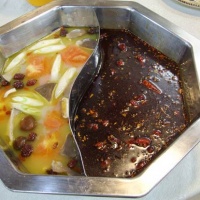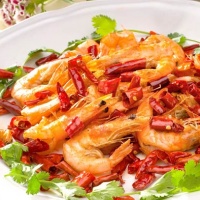- Home Page
- Fact Tours
Our sample tour itineraries of China and China travel packages are sorted by theme and available at competitive prices, you can browse what tours are right for you for your trip to China.
Popular China Tour Packages

Custom Tour Packages to China and Ask Our Experts for Free Enquiry !
- Coach Tours
- Destinations
Beijing, the capital of China. Its art treasures and universities have long made it a center of culture and art in China.
Beijing Top Attractions
Beijing City Tours
Best China Tours with Beijing
Shanghai, the cultural and economic center of East Asia. It renowned for its historical landmarks, the extensive and growing skyline.
Shanghai Top Attractions
Shanghai City Tours
Best China Tours with Shanghai
Xi'an, having held the position under several of the most important dynasties. It is the top destination to explore the facts of Chinese history.
Xi'an Top Attractions
Xi'an City Tours
Best China Tours with Xi'an
Huangshan boasts its culture, beautiful rivers, villages and mountains. It's home to 2 UNESCO World Heritage Sites and the Mecca of photographers.
Huangshan Top Attractions
Huangshan City Tours
Best China Tours with Huangshan
Sichuan is the cradle of the Shu culture, panda, mahjong, teahouse and spicy food. The province ranks first in China by number of UNESCO World Heritage Sites. It is called "the Heaven of Abundance".
Sichuan Top Attractions
Sichuan Tour Packages
Best China Tours with Sichuan
Yunnan, literally means the south of colorful clouds, due to its beautiful landscapes, mild climate and diverse ethnic cultures and traditions, is one of China's major tourist destinations.
Yunnan Top Attractions
Tibet, the nearest land to the sky, is known for its breathtaking landscape, splendid culture, art, buildings, and mysterious religions.
Tibet Top Attractions
Tibet Tour Packages
Best China Tours with Tibet
Explore the lost civilizations by riding a camel! Travel across the Gobi and the desert, and over the high mountains. Our Silk Road tours including different sections of the Silk Road in China.
Silk Road Top Attractions
Silk Road Tour Packages
Best China Tours with Silk Road
Guilin, an internationally-known historical and cultural city, has long been renowned for its unique karst scenery. Its vicinities are the paradise of hiking, caving, rafting, biking and countryside exploring.
Guilin Top Attractions
- China Facts
- China Hotels
- Travel Photos
Food, Cuisine, Drink
- Longjing Tea
- Wuyi Rock Tea
- Huangshan Maofeng Tea
- Keemun Black Tea
- Anxi Tieguanyin Tea
- Biluochun Tea
- Junshan Yinzhen Tea
- Liuan Guapian Tea
- Lushan Yunwu Tea
- Xinyang Maojian Tea
- Pu Erh Tea
- Tunxi Green Tea
- Yunnan Black Tea
- Suzhou Jasmine Tea
- Mengding Ganlu Tea
- Bai Hao Yinzhen Tea
- Huiming Tea
- Meng'er Tea
- Taiping Hou Kui Tea
- Yuhua Tea
Chinese Foods & Cuisines
Chinese Foods
Chinese people began to cook staple foods and dishes in the New Stone Age 5,000 to 6000 years ago. When it comes to food, the Chinese have a common saying, "The masses regard food as their heaven," which means that food is people's primal want. It should clearly justify the importance that "eating" holds in Chinese people's lives. Eating is not just meant to fill the stomach; having food at one's disposal, being able to consume a good amount of food, and knowing what and how to eat are all viewed as a good" fortune." Those who promote food culture often use the words of Chinese philosopher Confucius," diet and lovemaking, all primal needs of every human being," finding an aspiring and positive thought basis for such an epicurean lifestyle. There's probably not another place in this world that has as great a variety of delicious fate as China. The Chinese, who see eating as a fortune and life as an art, not only created various kinds of regional food styles in its own vast lands, but have also spread Chinese food culture to far across the seas.
Chinese Cuisines
It is a too exaggerated saying that Chinese people will eat anything and everything that moves, and no part of an animals or plant is wasted and their cookery is famine cooking. Indeed Chinese survival from famine or no abundance life in the long past helped them enrich their cookery, which contributed something to the variety of Chinese food. Many people who go to China expect a marvelous banquet to be available on every street corner. There is indeed a lot of excellent food available in China, some fascinating culinary exotica but it's in limited supply, in Canton, Shanghai, Beijing and Guilin.
Chinese cookery methods formed in the Shang Dynasty more than 3,000 years ago. Yi Yin, a prime minister of the Shang Dynasty, was the forefather of Chinese culinary art. "On Original Tastes," a section of Lu's Spring and Autumn Annals, recorded Yi Yin's profound understanding of cooking techniques in ancient china. It was also the earliest culinary treatise in the world. "On Original Tastes" includes detailed, pertinent description of such cooking matters as ingredients, species, heat nourishment and hygiene.
The vastness of China's geography and history echoes through the polyphony of Chinese cuisine. Chinese cookery developed and matured over the centuries and entered its heyday in the Qing dynasty (1644 -1911). Qing cuisine is characterized by its large scale and meticulous cooking techniques. Most famous are the Qing and Han Royal Feast, Thousand-Elderly Banquet and Confucius Mansion Banquet.
 Now, a variety of cuisines have formed out of different local products, climates, traditions and eating habits. Chinese food and drinks are featured by local cuisines. Each local cuisine has its own characteristics. To begin, it is best to divide Chinese cuisine, with all the appropriate disclaimers and caveats, into that of four major regions: the northern plains, the fertile east, watered by the Yangtze River; the south, famous for the Cantonese cooking of the Guangdong Province; and the fecund west of Szechwan and Hunan Provinces. Thus Chinese cuisine as a whole is divided into four major schools - Shandong, Sichuan, Huaiyang and Guangdong. These can be expanded into eight - Shandong, Sichuan, Yangzhou, Guangdong, Hunan, Fujian, Anhui, and Zhejiang. Sometime Beijing and Shanghai cuisines are added.
Now, a variety of cuisines have formed out of different local products, climates, traditions and eating habits. Chinese food and drinks are featured by local cuisines. Each local cuisine has its own characteristics. To begin, it is best to divide Chinese cuisine, with all the appropriate disclaimers and caveats, into that of four major regions: the northern plains, the fertile east, watered by the Yangtze River; the south, famous for the Cantonese cooking of the Guangdong Province; and the fecund west of Szechwan and Hunan Provinces. Thus Chinese cuisine as a whole is divided into four major schools - Shandong, Sichuan, Huaiyang and Guangdong. These can be expanded into eight - Shandong, Sichuan, Yangzhou, Guangdong, Hunan, Fujian, Anhui, and Zhejiang. Sometime Beijing and Shanghai cuisines are added.
Beijing and Shandong food comes from one of the coldest parts of China and uses heaps of spices and chilli to warm the body up. Bread and noodles are often used instead of rice. Beijing is capital of the country. As it is a cultural melting pot, traces of Muslim, Mongolian and Manchurian influences can be seen, and indeed it was the Manchu Dynasty which instituted the tradition of Imperial food, with its famous three-day feasts. Peking food is elegant and exotic, with subtle, delicate seasonings and is often barbecued, deep-fried or cooked in chafing dishes. The chief specialty is Beijing Duck, eaten with pancake and plum sauce. Another chicken specialty is Veggar's Chicken, supposedly created by a beggar who stole the emperor's chicken and then had to bury it in the ground to cook it - the dish is wrapped in lotus leaves and baked all day in hot ashes.
Some good Beijing dishes: chicken or pork with soya-bean sauce; bean curd with pepper sauce; fried shredded beef with chilli sauce; stewed mixed vegetables; barbecued chicken; fried shrimp eggs and pork pancakes. Another speciality is Mongolian barbecue - assorted barbe3cued meats and vegetables mixed in a hotpot. Birds' nest soup is a speciality of Shandong cooking, as is sweet and sour Yellow River carp. The latter is served singed on the outside but tender inside.
Shanghainese and Jiangzhenese, referred as Huaiyang in the past, food is noted for its use of seafoods. It's heavier and oilier than either Beijing or Cantonese, and uses lots of chilli and spices. Eels are also popular and so is drunken chicken - the bird cooked in shaoshing a potent Chinese wine which tastes a bit like warm sherry. Other things to try are Tientsin cabbage, some of the cold meat and sauce dishes, ham and melon soup, bean curd and brown sauce, braised meat balls, deep-fried chicken, and pork rib with salt and pepper. Jiangzhe cooking specializes in poultry and seafood, and the dishes are cooked in their own juices to preserve their original flavor.
 Sichuan is the hottest of the four categories and is characterized by heavy use of spices and peppers. Specialties include frogs' legs and smoked duck; the duck is cooked in peppercorns, marinated in wine for 24 hours, covered in tea leaves and cooked over a charcoal fire. Other dishes to try are shrimps with salt and garlic; dried chilli beef; vegetables and bean curd; bears' paws braised in brown sauce; fish in spicy bean sauce and aubergines in garlic.
Sichuan is the hottest of the four categories and is characterized by heavy use of spices and peppers. Specialties include frogs' legs and smoked duck; the duck is cooked in peppercorns, marinated in wine for 24 hours, covered in tea leaves and cooked over a charcoal fire. Other dishes to try are shrimps with salt and garlic; dried chilli beef; vegetables and bean curd; bears' paws braised in brown sauce; fish in spicy bean sauce and aubergines in garlic.
Cantonese is southern Chinese cooking - lots of steaming, boiling and stir-frying. Canton is, perhaps, the most famous of the food areas. It's the best of the bunch if you're worried about cholesterol and coronaries, as it uses the least amount of oil. It's lightly cooked and not as highly spiced as the other three. Long, warm, wet days throughout the year create the perfect environment for cultivating most everything. The coast provides ample seafood; the groves are filled with fruits. Lots of seafood, vegetables, roast pork, chicken, steamed fish and fried rice.
To learn more facts about different style Chinese cuisines, you can join our cooking courses on our tours to Chengdu or Yangshuo. The chef will teach you how to cook authentic Chinese food and tell you the interesting eating habits among Chinese.
Questions & Comments
Home | About Us | Partnerships | Terms & Conditions | Privacy & Security | Payment Guide | Resource Links| Sitemap
Email: contact@chinafacttours.com, Tel: +86-773-3810160, Fax: (+86) 773-3810333
Copyright © 2008-2022 China Fact Tours. All rights reserved
![]()









